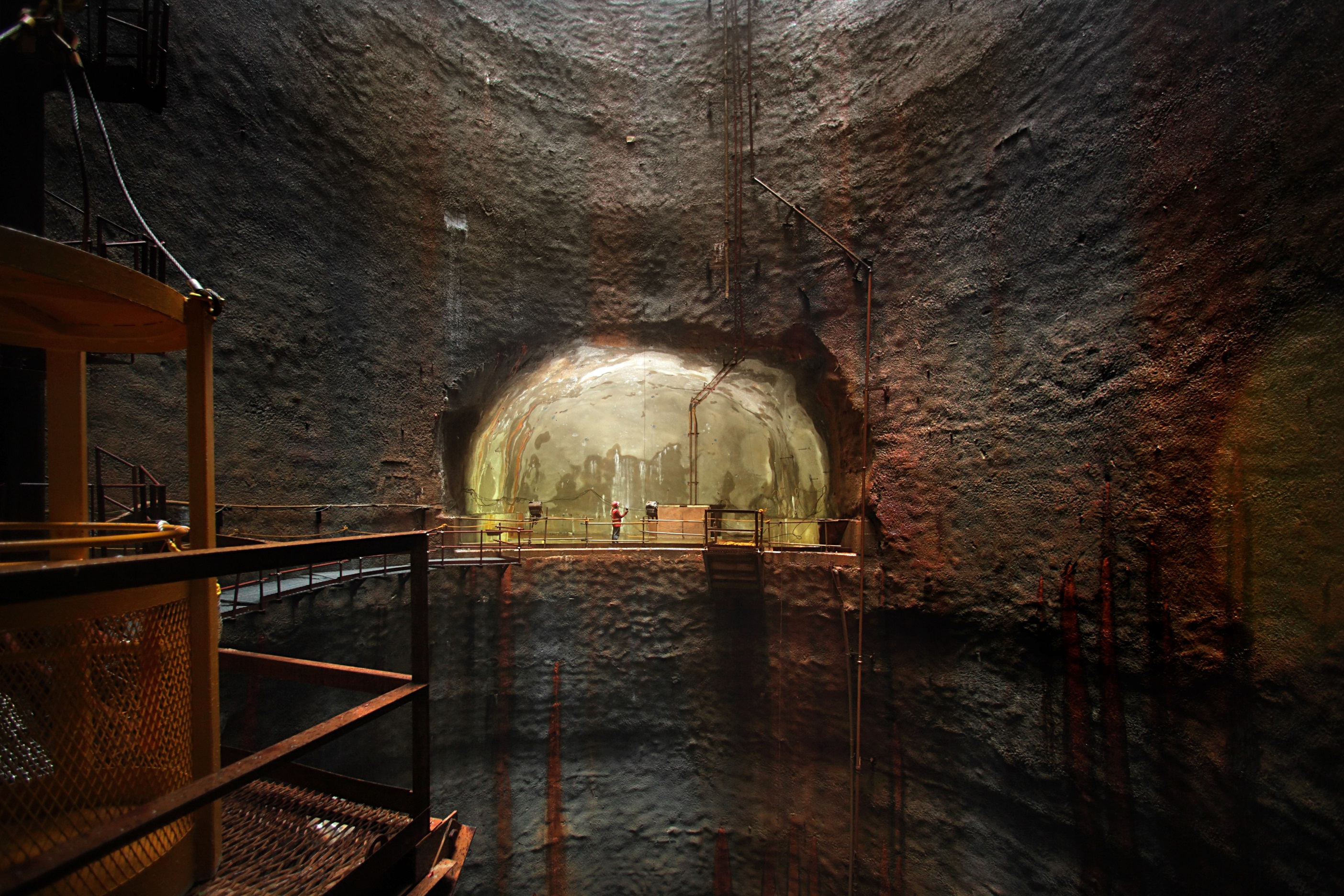“We’re about to go to hell and back,” we joked as we made our way to Jurong Rock Caverns (JRC) that day.
Before we arrived, we were told that the five caverns are located at the deepest known spot in Singapore, so we were feeling pretty important as we went down the access shaft.
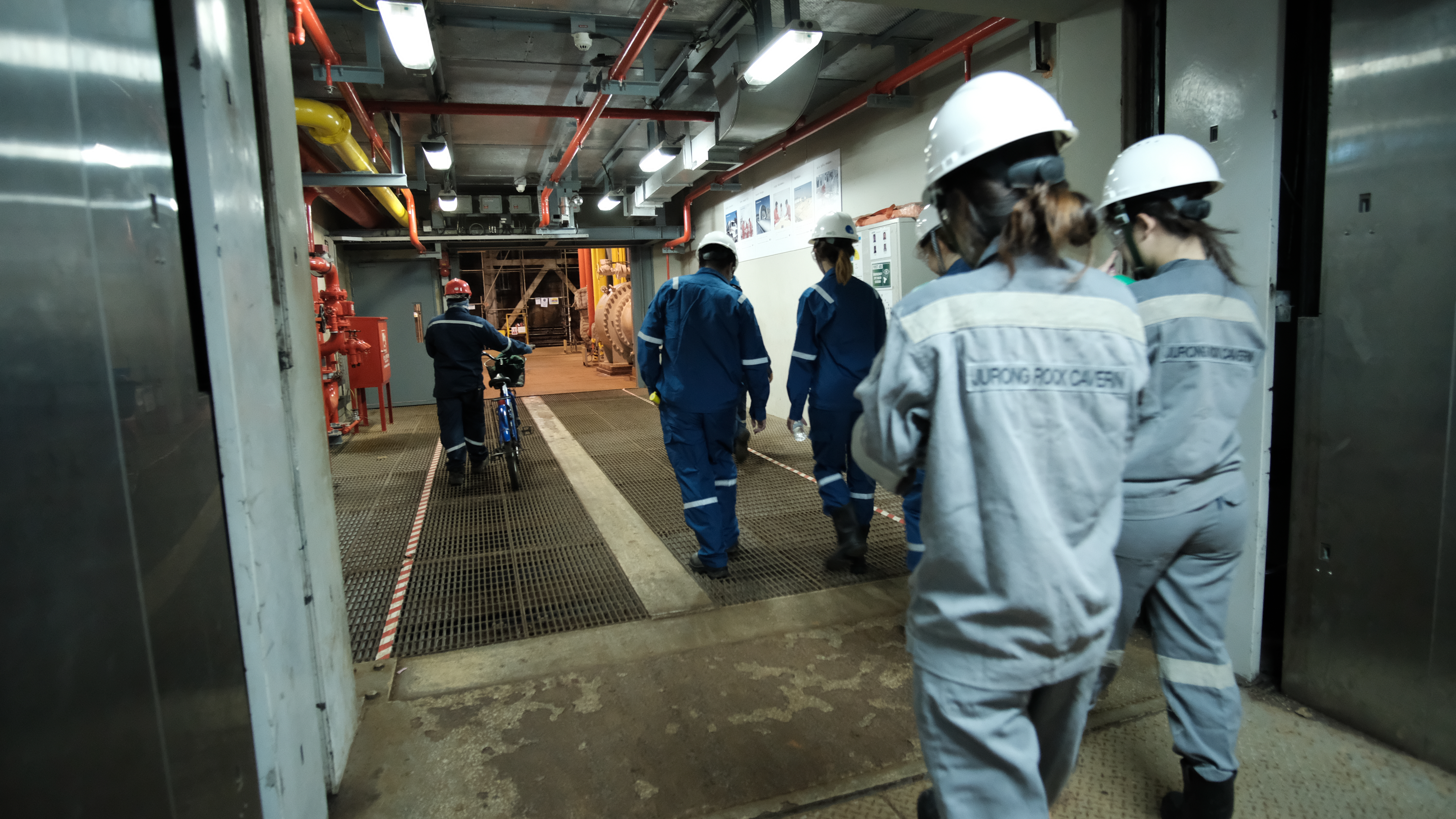 One of the two access shafts at JRC. Photo by Wei Choon Goh.
One of the two access shafts at JRC. Photo by Wei Choon Goh.
The shaft led us 100 metres underground to the operational tunnels, but that wasn’t even the deepest part.
So how deep does the facility go? We’ll tell you later.
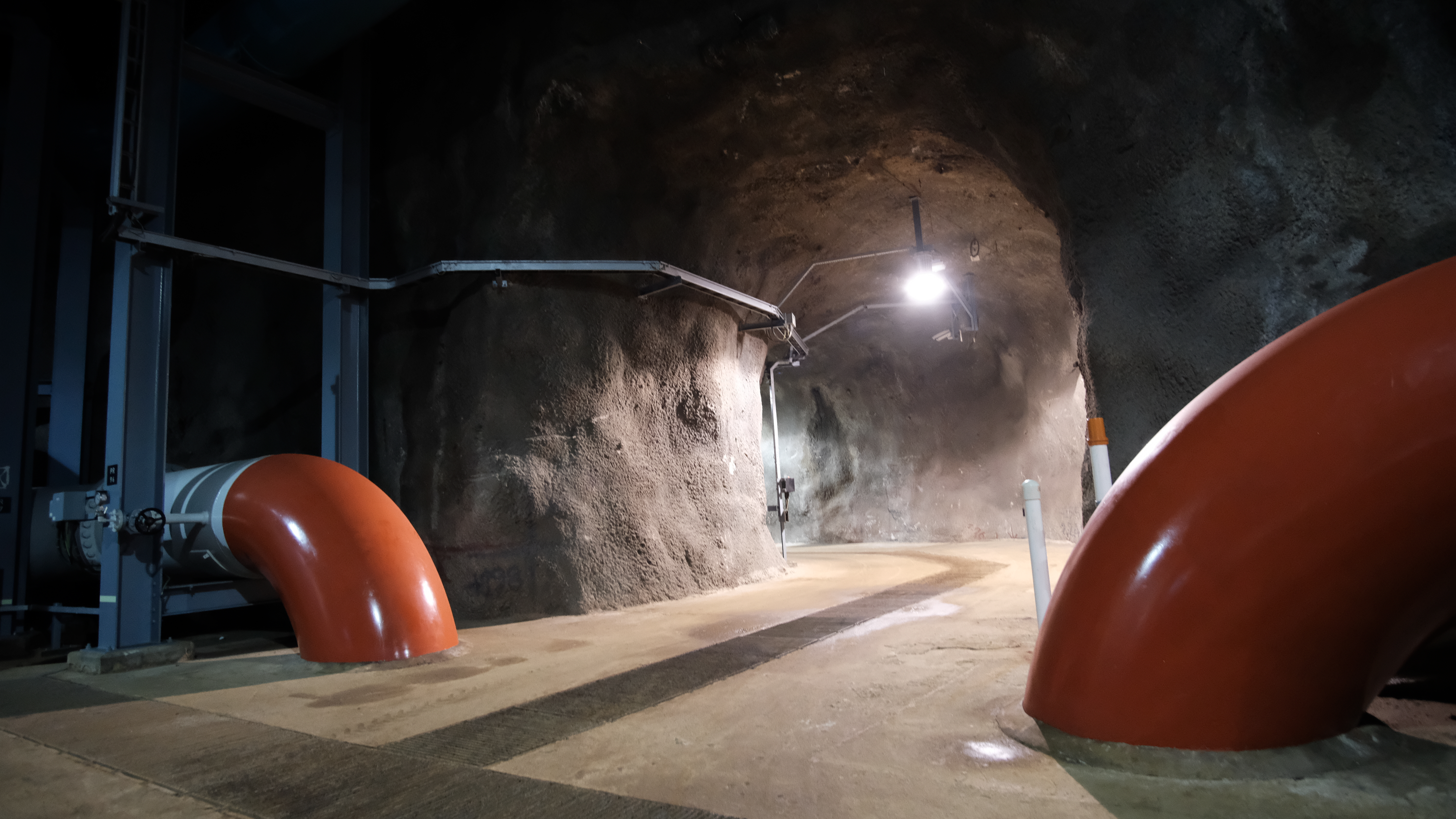 The operational tunnels level. Photo by Wei Choon Goh.
The operational tunnels level. Photo by Wei Choon Goh.
The purpose of JRC
The first question on our minds (and probably yours) was this: What in the world is hidden in the underground caverns?
“Crude oil condensate and naphtha,” Melvin, Senior Project Manager of JRC, answered. Translation to English: base products for oil.
To put it simply, the caverns are storage spaces for oil before they are extracted for usage in refineries and petrochemical plants. Almost like a warehouse, as the project manager pointed out.
 Photo by Wei Choon Goh.
Photo by Wei Choon Goh.
“Since JRC is the first underground oil storage facility in Southeast Asia, we had to do a lot of research on geographical formations, and think of new engineering processes prior to its construction,” Melvin explained.
In order to excavate the site to create tunnels and caverns, the drill and blast method was used. Each blast advanced the space by approximately 4.5 metres.
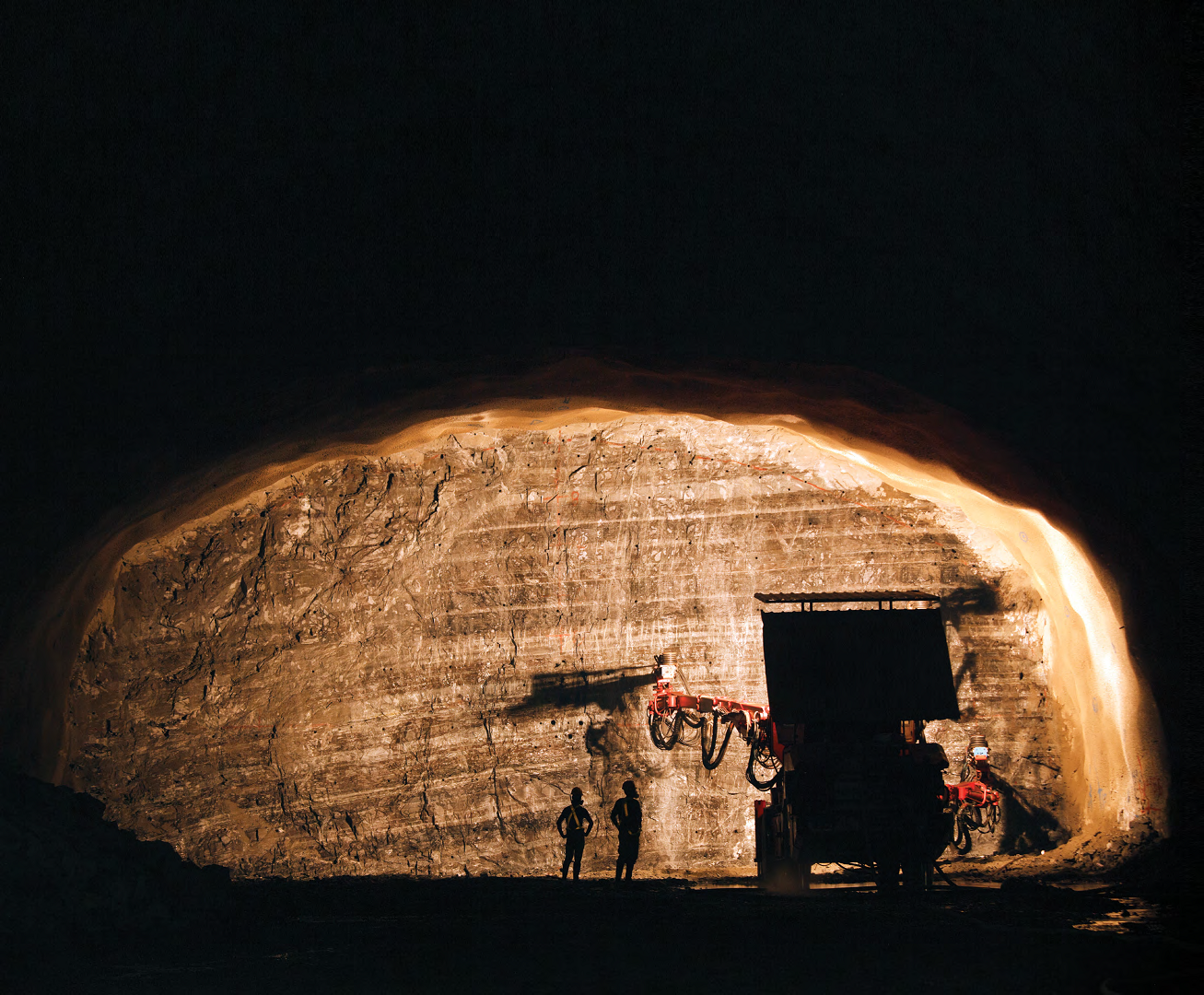 Photo courtesy of JTC.
Photo courtesy of JTC.
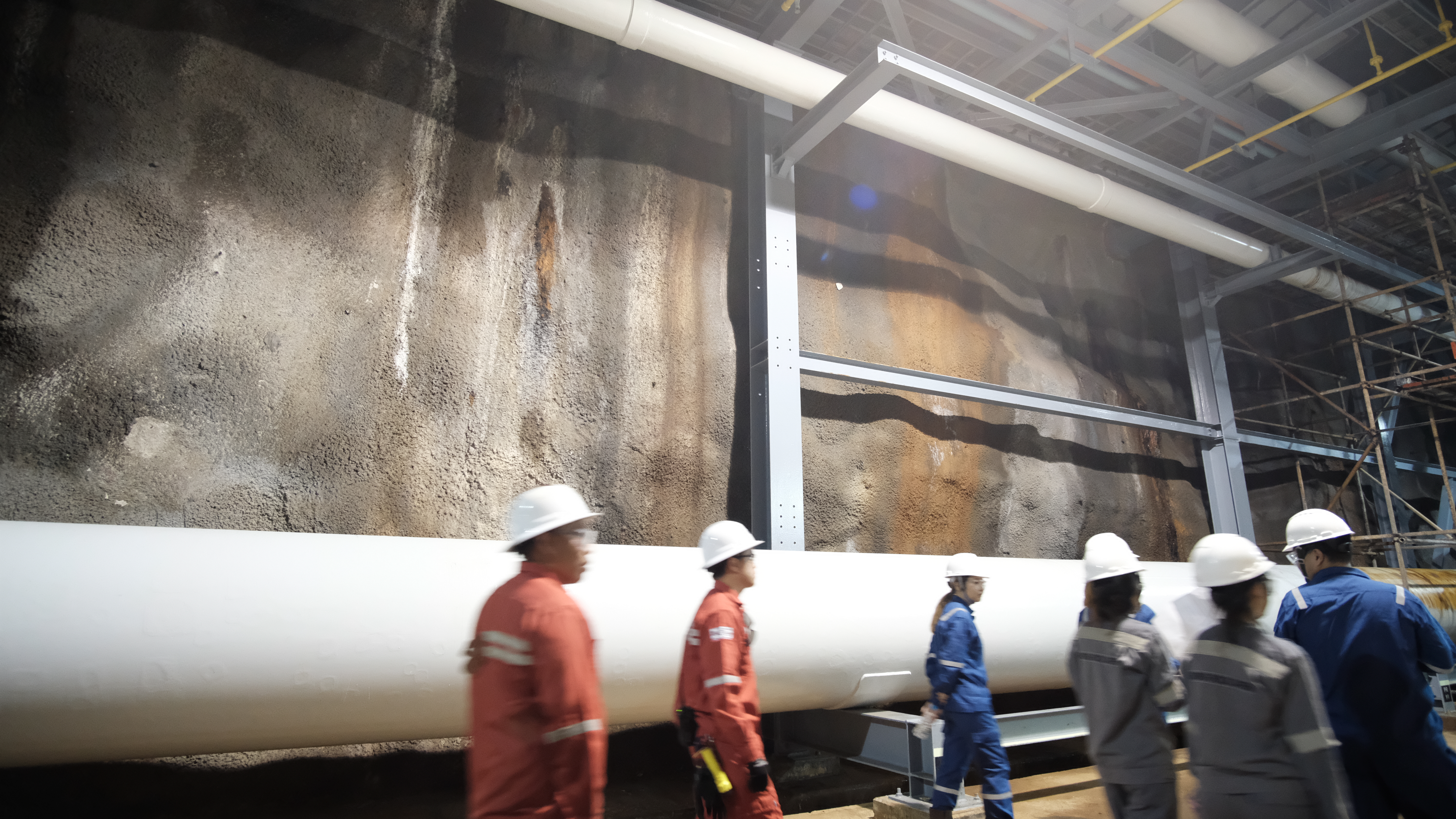 Photo courtesy of Wei Choon Goh.
Photo courtesy of Wei Choon Goh.
As of now, two of the caverns are used by one of the companies on Jurong Island.
How deep and big is it?
If you’ve been to Bencoolen MRT station, you would probably have noticed the neverending escalators that go from the ground level to the platform. It’s the deepest station in Singapore at the moment, and is 43 metres underground.
Now that that’s in your mind, imagine this -- the floors of the caverns are 150 metres beneath the ground (That’s more than three times the escalators at Bencoolen MRT station).
Just the separation space between the operational tunnels and the caverns is 30 metres apart.
 Here’s a useful infographic chart in case you can’t picture it. Photo courtesy of JTC.
Here’s a useful infographic chart in case you can’t picture it. Photo courtesy of JTC.
“We didn’t plan for it to go so deep initially -- everything was supposed to be 30 metres higher. But during the complementary site investigation done prior to construction, my team realised that the rocks were of a much better quality at a deeper depth,” Melvin said.
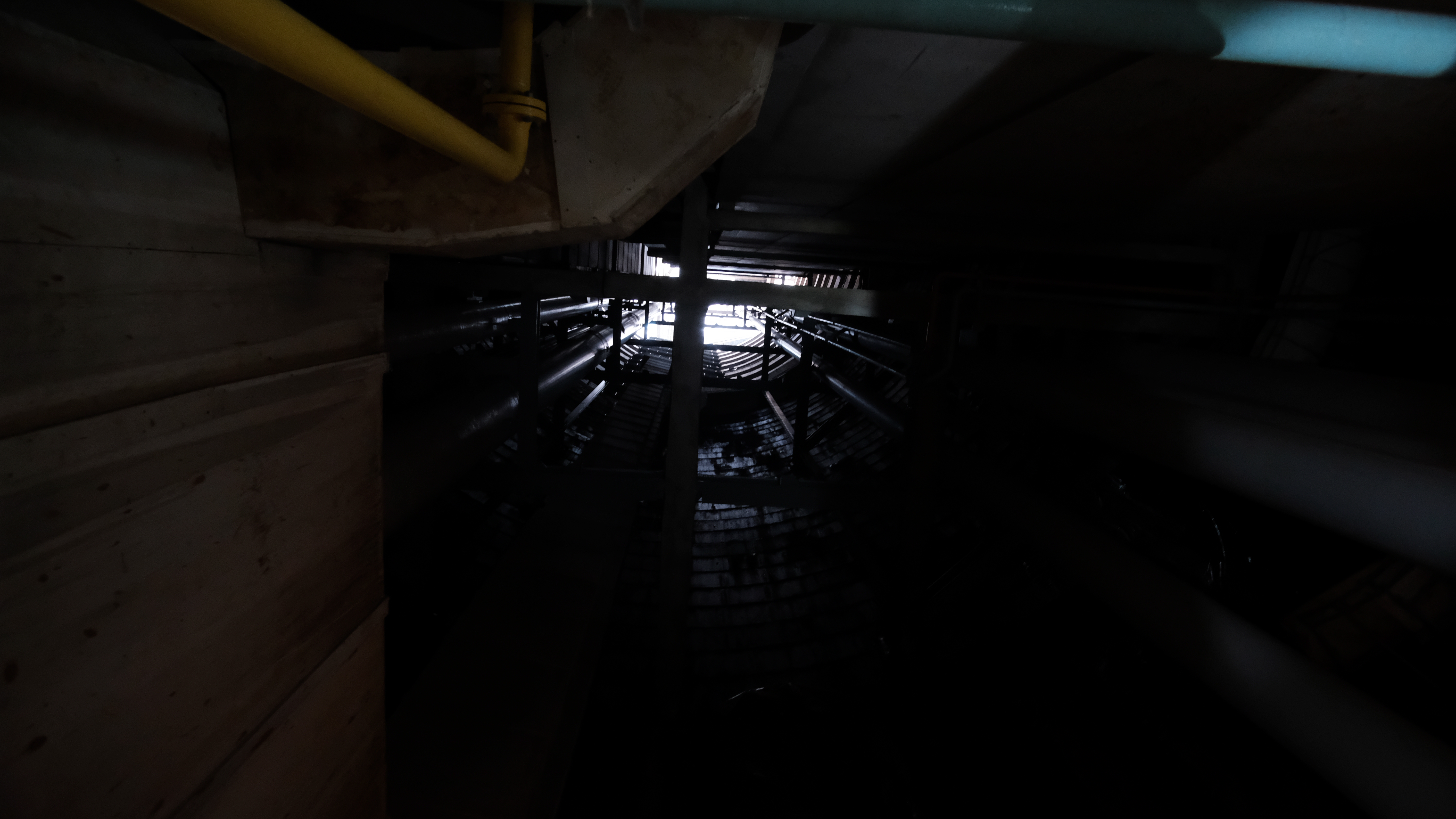 The view from 100 metres underground. Photo by Wei Choon Goh.
The view from 100 metres underground. Photo by Wei Choon Goh.
Size-wise, the JRC facility uses 15 hectares of land. If you think that’s big, just know that the same infrastructure would span 60 hectares if it was built above ground.
The amount of land saved is equivalent to more than 60 football fields.
It was the main reason why they wanted to build caverns in the first place -- to save space.
Speaking of saving space, we have an underground construction idea to suggest to Melvin and his team: An amusement park.
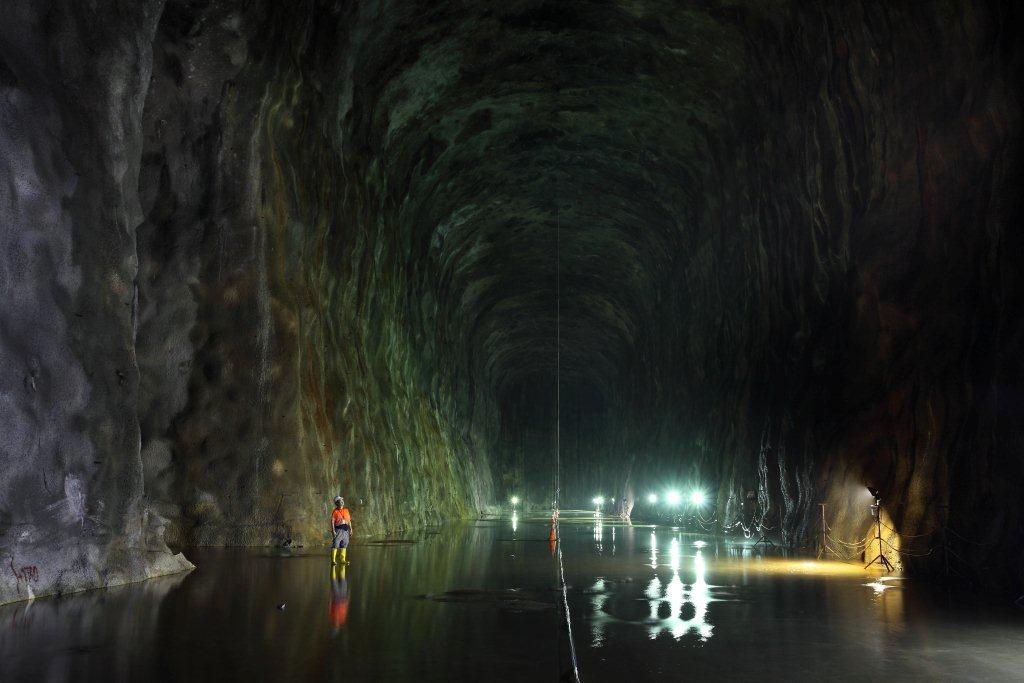 Photo courtesy of JTC.
Photo courtesy of JTC.
Got ghost stories or not?
Since it’s so deep and dark underground, we wondered if the employees had any scary stories about the facility, especially those who work overnight shifts.
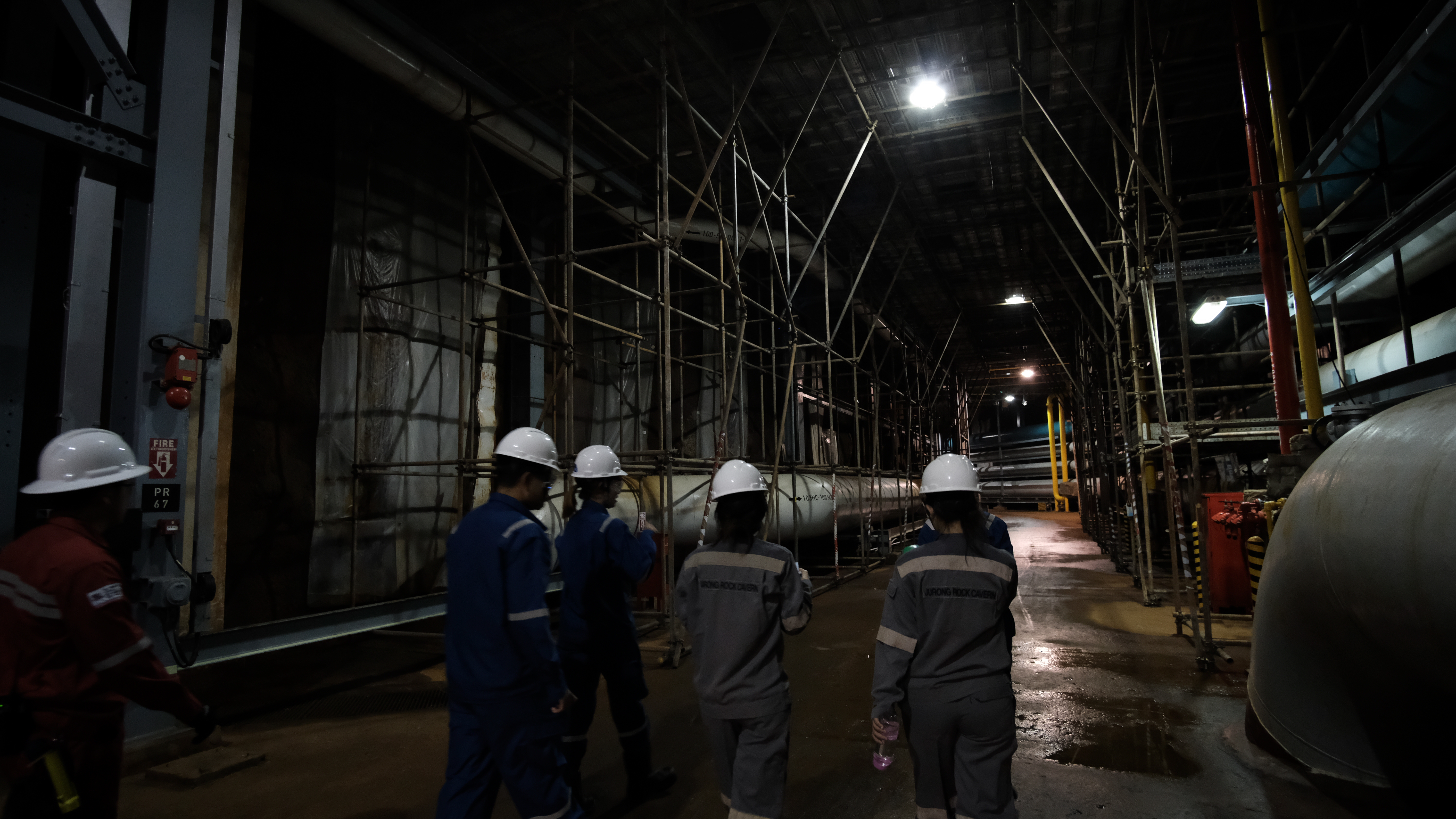 Photo by Wei Choon Goh.
Photo by Wei Choon Goh.
An operations technician shared, “When I first started, I would get scared whenever the machines or lifts made random sounds, but now that I’ve been here a while and know the place inside out, it’s actually pretty chill to work here at night.”
So moral of the story -- just don’t let your mind run wild.
Top photo courtesy of JTC.
--
The JRC project started in 2007, and officially opened in 2014. It is owned by JTC Corporation.
This sponsored post in collaboration with JTC Corporation makes Mothership.sg’s writers wonder what it’d be like to hit the center of the earth.
If you like what you read, follow us on Facebook, Instagram, Twitter and Telegram to get the latest updates.
